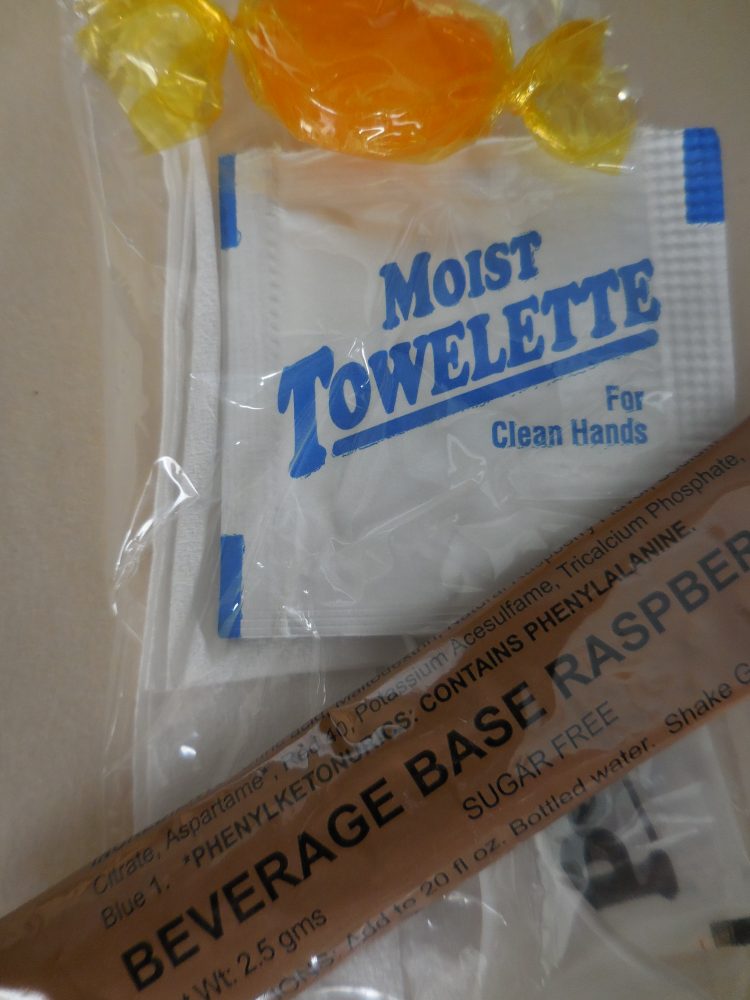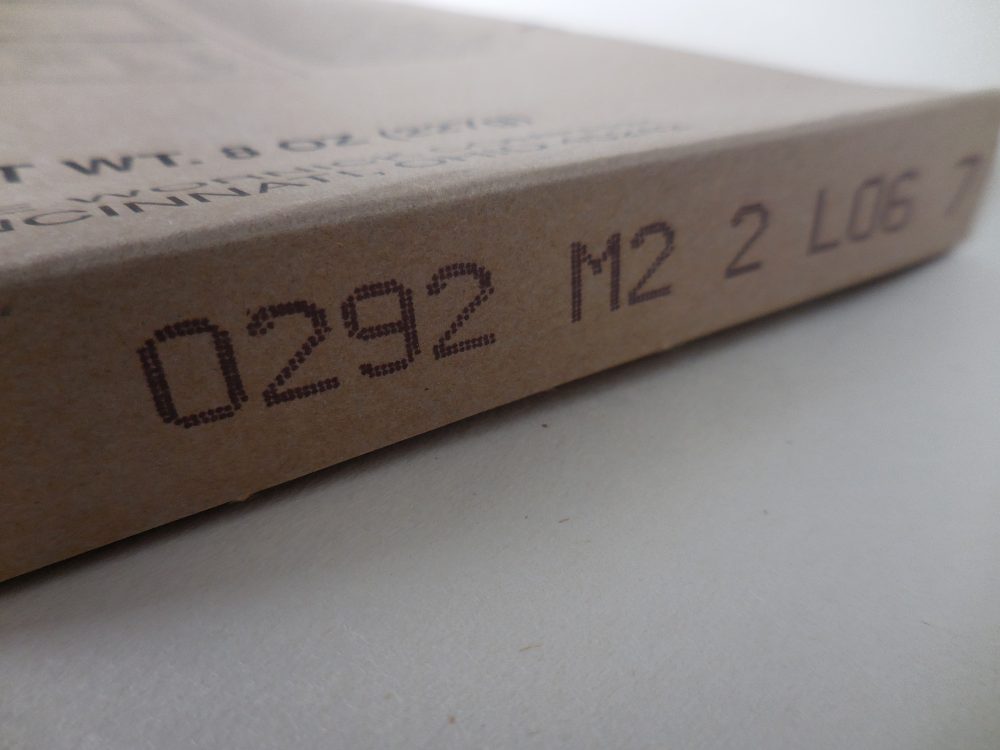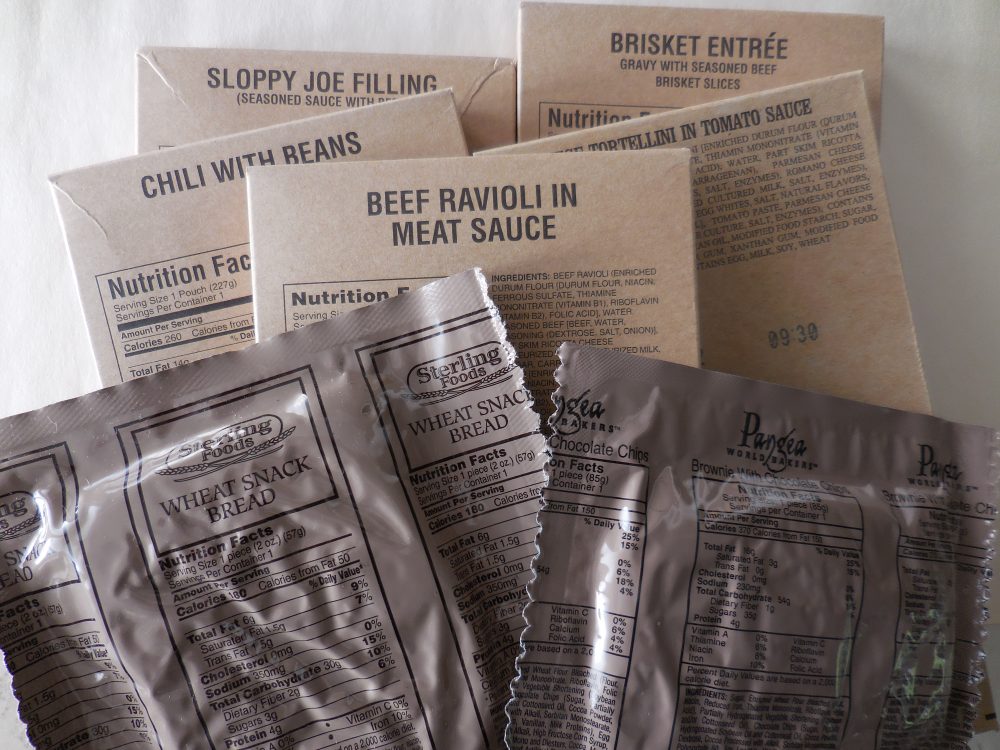Meals Ready to Eat, or simply MREs, are the main individual self-contained field ration for U.S. military personnel. MREs are primarily intended for use in combat or field conditions where other food facilities may not be available. They have been around for over 30 years, but their roots stretch back to the C-Rations used during World War II.
MREs have come a long way since those early days, with major improvements in taste, texture, shelf life and variety. Today, MREs are widely used during civilian emergency and disaster relief efforts, and in individual preparedness planning. Many consider MREs to be the perfect food for a bug-out bag (72-hour emergency kit), or as a possible “heat & eat” emergency food storage option.
On the lighter side, MREs have also become popular with campers and hikers looking for a quick no-cook, high-calorie food option that can be eaten hot or cold.
Reading the date-code correctly will help you manage and rotate your MRE stores.
If you are considering MREs as a possible food option in your preparedness plans, or for your next trip into the wilderness, there are some things you should look for. Here are ten simple tips to help you sort it all out.
The Meal: Complete meals typically provide about 1,200 calories, with a generous serving of carbohydrates, proteins, vitamins, and fat. The MRE usually contains a complete fully cooked entrée, side dish, cracker or bread, a spread (peanut butter, jelly or cheese), dessert, candy, beverage mix, seasoning packages (salt, pepper, etc), and an accessory pack (spoon, creamer, sugar, etc).
Shelf Life: MREs have an approximate shelf life of three to five years depending on storage conditions. A safe rule of thumb to follow is no more than five years even when stored in ideal conditions (50°-70° F). MREs stored in a cool, stable environment away from heat, direct sunlight, humidity, and pests will keep longer. You may still be able to eat MREs after the recommended date, but their nutritional value and taste decline over time.
An assortment of familiar meals is available, providing comfort and nutrition.
Read the Date Code: MRE manufacturers use a four-digit code to indicate the manufacture date. This code is stamped on the box and pouch. The first digit represents the year they were made, and the following three digits the day in that year. So 0292 would be the 292nd day of 2010, or October 19, 2010. Use this code to help you manage and rotate your inventory, but remember that storage conditions before you bought the MREs could have affected their shelf life.
Nutritional Facts and Health: The nutritional label of the average MRE can be an unexpected eye opener. The sodium content of the Brisket Entrée with gravy, for example, is 61% (1460 mg). The Dietary Guidelines for Americans (according to the Mayo Clinic) recommend limiting sodium intake to less than 2,300 mg a day, or 1,500 mg if you’re age 51 or older, have high blood pressure, diabetes or kidney disease.
While sodium intake may not be a top priority during a real survival situation, having to deal with an emergency medical condition would be a nightmare. Someone who is used to a low-sodium diet would probably not react well to a sudden spike in their sodium intake. Also people who are allergic, intolerant, or sensitive to gluten, peanuts, or other common ingredients also need to take a close look at the nutritional label.
Fruit jams, peanut butter, and cheese spread add variety to the meals and also provide a quick snack.
Taste Test: Before running out and buying a large supply of MREs, do yourself a favor and sample some of the meals. If you’re like most people, you’ll find there are some MREs you like, others you might be able to tolerate, and others you would have trouble keeping down—even during an emergency. This is all good information to know before you take out your wallet. Have family members join in on the taste testing. (Trust me on this one.)

“Gut” Test: Some MREs will taste fine but may not agree with your digestive system. The best time to find this out is now. Experiment with different options before you’re in the middle of a survival situation. Sample different meals from different manufacturers before committing to any large purchase.
Heat It Up: Some MREs come with a flameless heater pouch. This is a water-activated chemical heater that is capable of producing a temperature of about 100°F in approximately ten minutes. This is a convenient, low-profile way to heat up a meal without starting a fire or having to carry around heavy portable stoves or fuel.
Military/Civilian: There are two kinds of MREs—U.S. Military MREs and civilian MREs. And although military MREs can often be found for sale, the companies that produce MREs for the military are not allowed to sell to the general public. The majority of the MREs for sale to the public are civilian MREs. These may not contain the flameless heater, but it can be purchased separately.
Cost: MREs can be expensive, so shop around and only buy from reputable dealers. A single complete meal can range from $8 to $12. A case of 12 MREs can cost $40 to $100. While there are lots of deals to be had on the Internet, there are also lots of sellers who don’t provide a list of what’s included, the date codes, or the storage conditions prior to shipment. Buyer beware!
Inspection: No matter what date is on the package, avoid all MREs that are swollen, punctured, or ripped. Likewise, if the contents look suspect or have a foul odor, ditch it. As with all food stores, actively manage your supply and rotate.
MREs have evolved significantly over the last 30 years. Taste, nutrition, packaging technologies, and shelf life have all improved. MREs are not for everyone, nor for every situation. But if you are looking for an emergency food option, the MRE is certainly worth considering.
Richard Duarte is a practicing attorney and currently teaches and consults in the areas of urban survival planning and preparation. He is the author of Surviving Doomsday: A Guide for Surviving an Urban Disaster. For the latest news and updates, connect with Richard on www.survivingdoomsdaythebook.com.









